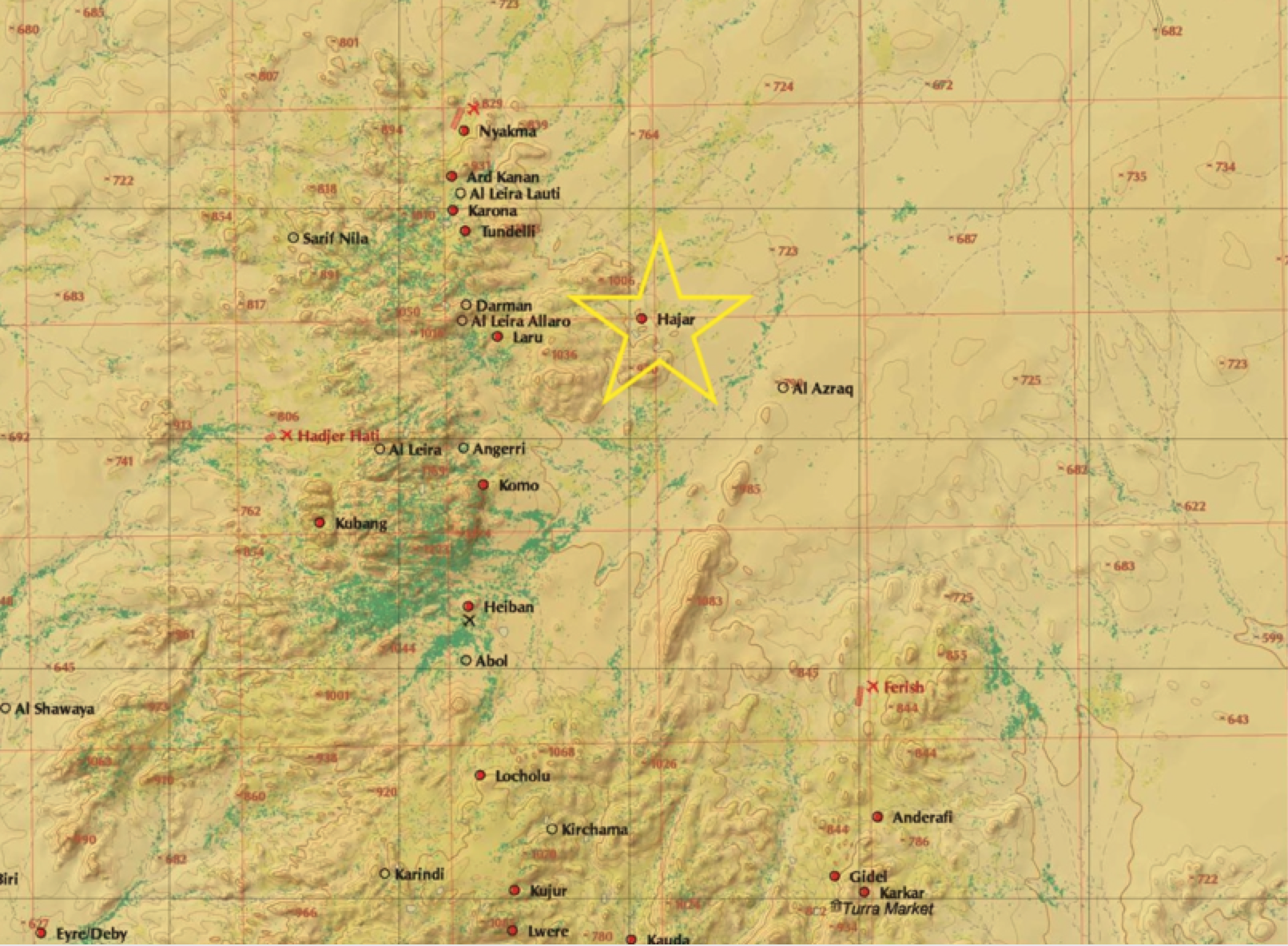Recently reported activities by the Sudan Armed Forces and Rapid Support Forces in and near South Kordofan
Eric Reeves | April 5, 2019 | https://wp.me/p45rOG-2oI
It is not clear what to infer from an upsurge in intel from South Kordofan about increased activities by both the Sudan Armed Forces (SAF) and its militia counterpart, the Rapid Support Forces (RSF). It may well be that with the uprising in Sudan commanding what limited international news coverage and diplomatic energies there are, military action is in the works. The preliminaries to a dry season offensive started in January, and recent activities signal that an actual offensive may be in the offing.
In the absence of a clear signal to the al-Bashir regime, with threats of significant consequences if an offensive is launched, large-scale violence is much more likely to begin. The rainy season is not very far off…
• From a confidential but highly/highly authoritative and extremely reliable source in the Nuba Mountains of South Kordofan:
Regarding the information we have about the RSF deployed to the Nuba Mountains in the period January 15 – 17, 2019 were as follows:
[1] Habila garrison town – 150 mounted l/cruisers – intending to Kawalib areas of Watta, Dare, Hadra, and Abyad.
[2] Kurgul garrison town – 54 mounted L/cruisers to attack Katan, Wudney
[3] Kharasana garrison town 135 mounted L/cruisers to attack Lake Jaw [also Jau].
[4] Kadugli garrison town 100 mounted cars to provide cover and protection to President Bashiir visit to Kadugli town. These were the RSF movements that were reported.
• From another highly authoritative source from the Nuba Mountains
I just heard this morning (April 5, 2019] that there have been three Sudan Air Force helicopters per week landing in Al Azraq (SAF base) which is around one house [sic] from here (near Heiban). Not sure what they’re bringing but sure it’s not medicines and food aid.
Also heard there are troops moving into a place called Tusi (another SAF base) which is not too far from here as the crow flies. It’s between Timbera (SPLA controlled) and Kalogi (SAF area). Also am not sure if they are SAF or RSF…
There was a landmine explosion near Al Azraq a couple of weeks ago. Two kids were killed on the spot, one had minor wounds and one was hospitalized with us. It was planted near a watering hole for cattle between Ajar Bago (SPLA) and Al Azraq.
• From South Kordofan/Blue Nile Coordinating Unit: FLASH UPDATE #1 (April 4, 2019)
A landmine kills two people in SPLA-N areas, it undermines access to the affected population and raises concerns over the tenure of the Cessation of Hostilities
On March 20th, 2019, two young adults were killed by the explosion of a suspected landmine around Hajar Bago village, in Heiban county, within the SPLM/A-N controlled area of South Kordofan (about 15 Km north of Heiban town and about 30 Km north of Kauda).
The suspected anti-personnel (AP) landmine was planted around a water point used by both humans and animals, close to a main road. Three people were also injured in the incident, and one was discharged from hospital after a few days.
In a statement issued after the incident, the Sudan People’s Liberation Movement-North (SPLM- N) has provided the names of the victims and blamed the Government for the attack. An SPLA- N committee was formed to investigate the matter.
Local monitors have provided evidence of the incident and the victims. Observers and monitors from the area reported that military activities were conducted in the area on the night before the incident. Mobile troops from SAF were seen moving from Al Azraq base into the SPLA-N controlled area, though it is unclear whether the two parties had clashed. It is reasonable to think that the landmine was positioned on that night, since the water point was frequently used, and no incident had happened before. However, it remains unclear who positioned the landmine.
The presence of the possible AP mine poses a serious threat to peace in the area and to the protection of civilians, while it reduces access of people to water, farms and schools. It is also a clear violation of the Cessation of Hostilities in South Kordofan declared by the parties.
The use of landmines is prohibited by an international convention. Despite that, hundreds of civilians in South Kordofan and Blue Nile have been victims of AP mines and other explosive remnants of war (ERW). Sudan ratified the AP mine Ban Convention in 2003 that aims at eliminating the use and presence of all anti-personal landmines in the country (signed it on 4 December 1997). Sudan adopted the Sudan Mine Action Law on 31 March 2010, which includes penalties for violations. It also signed the Convention on Conventional Weapons (CCW) on 10 April 1981 but has not ratified it.
While the Convention does not directly apply to the SPLM-N, the group has been a signatory to Geneva Call’s Deed of Commitment banning anti-personnel mines since November 2013 and to the Deed of Commitment protecting children in armed conflict since June 2015. As such, the SPLM-N agreed to prohibit the use, production, and transfer of antipersonnel mines, to cooperate in humanitarian mine action activities, and to destroy its stockpiles.
Uncleared areas pose a long-term threat to the safety of communities and their ability to cultivate, harvest and to return to normal life after conflict. It also affects humanitarian access to the people in need. An independent investigation on the incident should be urgently conducted.